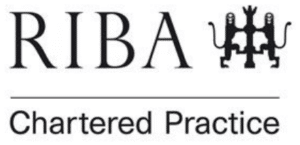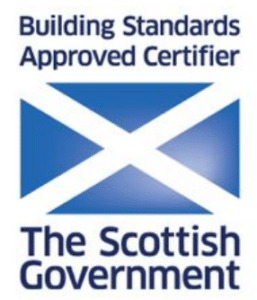Some people assume Passivhaus is a general term to describe an energy-efficient home. In reality, it’s a highly rigorous standard to achieve low-energy homes, involving specific levels and targets which must be tested and achieved for the house to be labelled a Passivhaus. So even if we use Passivhaus techniques on your build, this doesn’t mean you have a Passivhaus. However, it will still benefit from the use of Passivhaus methods.
One home designed and completed by us with Passivhaus accreditation is Auchineden, a retrofit Passivhaus project, meaning we renovated an old building – a Scottish stone barn – to create a Passivhaus EnerPHit standard home, the first of its kind in Scotland.
QUICK GUIDE – PASSIVHAUS
- Voluntary building standard devised in Germany in 1991
- Accurate method of designing energy efficient homes where minimal heating or cooling is required
- Passivhaus homes must have a heating demand of not more than 15 kwh/m2 per year, and total primary energy consumption of not more than 120 kwh/m2 per year
- The method results in well-ventilated homes with good air quality
- Passivhaus homes maintain a comfortable temperature
HOW PASSIVHAUS STANDARDS ARE ACHEIVED
- Extreme levels of insulation (average depth of 300mm)
- Triple-glazed windows with insulated frames
- Exceptional airtightness (the levels must score better than 0.6 air changes per hour)
- The builds require mechanical ventilation with heat recovery (MVHR). This is the use of low-energy fans to silently and gently blow air into the building and blow the same amount of air out. The heat in the extracted warm air is recovered and used to warm the fresh air coming in.
Using the Passivhaus method in Scotland
Passivhaus methods were designed in a northern European climate, and there is no problem with building to the Passivhaus standard in Scotland or the rest of the UK. In fact, there is a real need to reduce heating and other energy use costs here, so Passivhaus offers a good solution to those issues.
As we all become more environmentally conscious and aware of the climate crisis, so older uninsulated houses are becoming difficult to sell. Buyers know that at some stage they will have to address these issues. A retrofit Passivhaus renovation is an option here.
One clear benefit of Passivhaus is that the buildings offer an accurately defined way of measuring energy efficiency. The heat load cannot be more than 15kwh/m2 per year, which is a fraction of other standard new builds, and also, only minimal heat input is needed. Passivhaus offers a standard that you know will perform to this level.
Transforming a house or building a house to Passivhaus standards should increase the value of your home. However, we know that the Passivhaus badge is never enough on its own. The desirability of a house still very much depends very much on its appearance, style, flow, and the quality of the spaces inside it. For example, if the owners want a large glazed area to make the most of a spectacular northerly view, the build may not achieve full Passivhaus standard, but it can still get close. This is why even using some Passivhaus methods is advantageous. Tom Robinson has the Passivhaus methodology and knowledge at his fingertips to apply to any build.
Why aren’t all houses build to Passivhaus standards?
Passivhaus methodology demands exceptionally high standards at both the design stage and the construction stage. If the materials, specs and airtightness standards that you select when you enter everything into the thermal modelling software are not applied on site, the build will fail and you will not have a Passivhaus. These targets require rigorous attention to detail and sticking to the specifications on site, and can be seen as unforgivingly high standards, which can sometimes frighten many builders. If you’re planning a Passivhaus, the builders must be on side as well as the design team. There is no one set building system or method for building Passivhauses. One key consideration however is that when choosing the build method, is how the airtight barrier is going to be achieved. Like with a lot of things, simple and elegant is a good mantra – we know that if you can explain and show how everything goes together, the reality will follow.
If you’d like more information about building a Passivhaus or applying Passivhaus methods to your project, contact us to engage with Tom Robinson, a Certified Passivhaus Designer.















